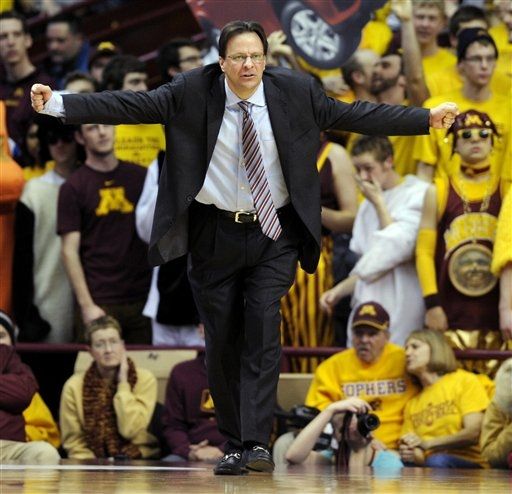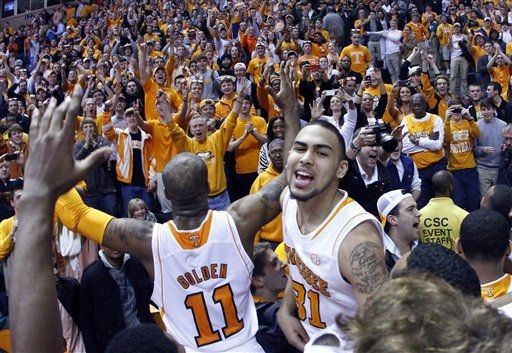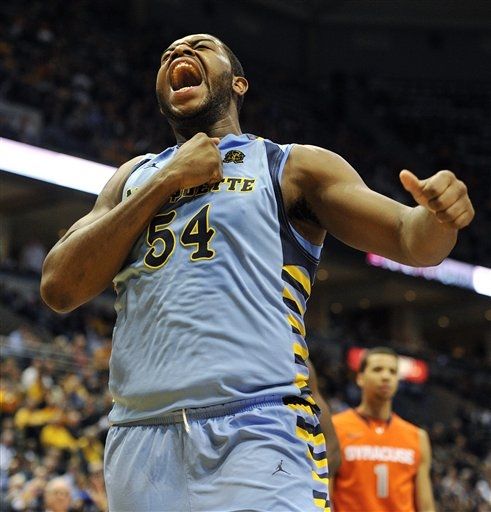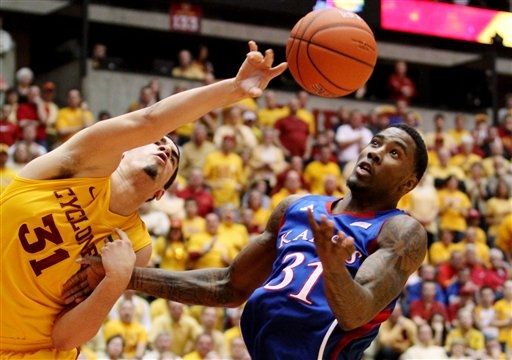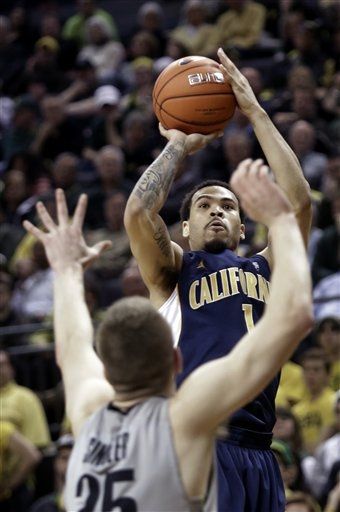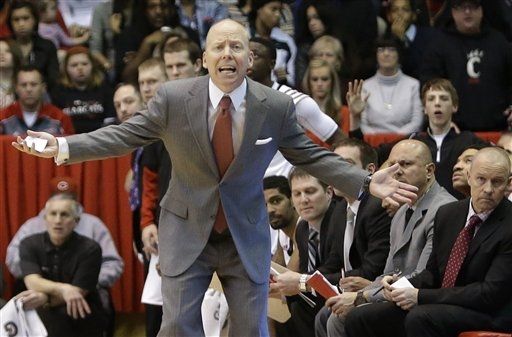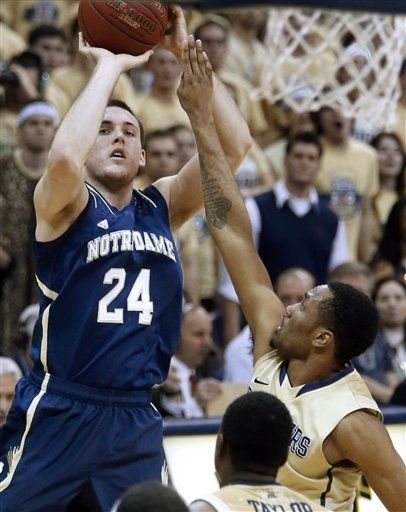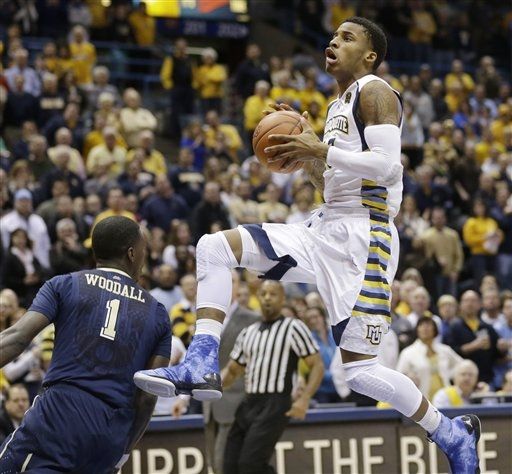ATB: Another Big Upset in the Big Ten, the Still-Undefeated Zips and Some Pac-12 Drama…
Posted by Chris Johnson on February 28th, 2013Chris Johnson is an RTC Columnist. He can be reached @ChrisDJohnsonn.
Tonight’s Lede. Because Big Ten Upsets Come In Pairs. Right when the Big Ten churns out one massive upset, number one Indiana’s four-point loss at Minnesota Tuesday night, the league got bored, went back to the drawing board, and said – in the most demonic voice possible – hey, Michigan, your time has come. The Wolverines went down on the road, at the house of a traditional basketball doormat, and on most nights, that story in itself would block out the rest of the night’s schedule. Not so – the Michigan loss was merely an icebreaker for a long and thorough evening of big-time matchups. Your humble nightly ATB writer compiled a sampling of the biggest headlines. Alas:
Your Watercooler Moment. A Very Happy Valley.
The conciliatory retort to any mildly surprising loss in the Big Ten season has gone a little something like this: it’s ok to lose on the road in the Big Ten, because you know how hard those Big Ten road games are, right? Wednesday night’s shocking result in Happy Valley, where Penn State won its first conference game in 18 tries after a blistering 15-point second-half comeback, was a huge exception. Most road games are difficult to win in this league, no question; from Mackey Arena to the Crisler Center to the Barn, the Big Ten lays claim to some of the nation’s most raucous campus environments. Teams lose, like Indiana at Minnesota, and it’s tough to get too caught up in the result. Any team in this uber-deep league can rip off a big upset win on any given night, it is widely and frequently said. We would have been rolling out the same logic had Michigan lost at, say, Illinois or Minnesota. Instead, the Wolverines elected – willfully or not – to suffer their worst loss of the season against the worst team in their league. And the weird part is, the final score really isn’t that crazy at all. To the passive onlooker, yes, Michigan had no business losing this game. But for anyone who paid mind to Penn State’s eight-point loss (ahem, moral victory) at the Crisler Center just 10 days ago, seeing Michigan bite the dust at State College was insane, but it wasn’t some Kansas-TCU-level revolution. The point in all of this is not to disparage Penn State by way of condemning the unlikelihood of Michigan’s loss. The Wolverines have some real issues to sort out in the final weeks, particularly on the defensive end. With two of their final three games coming against Michigan State and Indiana, Michigan needs to shake this off, address whatever issues ailed them at PSU and rally for an important concluding schedule in advance of what’s shaping up to be an utterly chaotic Big Ten Tournament.
Also worth Chatting About. Pac-12 Competitiveness.
Unlike the 2012 version, this year’s Pac 12 is sort of ok. In fact, it’s more more than that. The league could, believe it or not, birth as many as six NCAA Tournament squads this season. Four of those Tournament hopefuls took the court Wednesday night, and the most significant result (Arizona’s loss at USC) is probably something we should have suspected all along. USC has won five of its past seven without fired coach Kevin O’Neill and are quietly playing their best basketball of the season; meanwhile, Arizona’s last three road games, including tonight’s loss, read as follows: a blowout loss at Colorado, a four-point win at Utah and a loss at USC. In other words, the Wildcats’ squeaky road ways were a dangerous way to life live in the Pac 12. In the other two marquee P12 games of the night, UCLA held serve against Arizona State and Colorado hung tough and gutted out a road win at Stanford. Most of these teams, with a few exceptions at the bottom, are competitively intriguing, and Wednesday night was the latest example. Not even the possibly one-seed bound Wildcats are safe against the likes of a middling if inspired USC. The league may not be great at the top — much like every power league this season, there truly is no “dominant team” — but the considerable growth in the middle regions has added substantial girth to a conference that sent just one at-large team to the NCAA Tournament last season and saw its regular season crownholder, Washington, miss the field altogether. Change is undeniable. The preeminent western conference is back on its feet, and the on-court product it doles out keeps getting better and better as the season closes in on the most crucial stretch.































